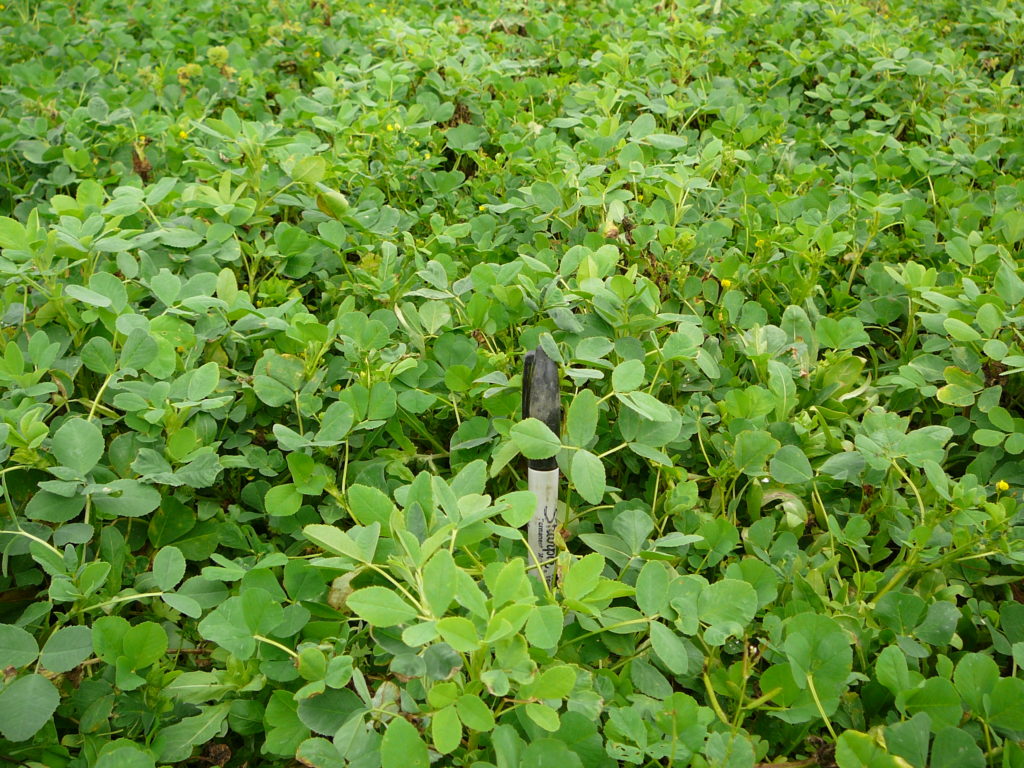
Best Article on White-tailed Deer Food Plots, Ever!
A PRIMER ON FOOD PLOTS FOR DEER
By Dr. James C. Kroll (Dr. Deer)
In 1975, we founded the Institute for White-tailed Management & Research here at Stephen F. Austin State University; and, at that time there was very little research being conducted on our most popular game animal. We wanted to develop a research program that would address the real world problems faced by landowners, professional wildlife managers and hunters.
Our goal was not to be like the average college professors of that time, working on projects that were not all that relevant! The best way to start was to assemble what today would be called a “focus group,” made up of individuals representing variety of user groups.
We asked them a basic question: What do you need to know about whitetail management and hunting? The consensus involved two basic areas: 1) What can we do to grow more and bigger bucks? and, 2) How do we increase our chances of harvesting mature bucks after we have produced them? So, we put together our first 20 year research plan to meet these needs.

Well, we now are into our third, 20-year plan and time has passed too quickly! Along the way, we managed to make significant discoveries and developments that changed the whitetail world; among which included the first food plot research and testing program.
The Beginning of Food Plots for White-tailed Deer
When we started, plantings for deer were not called food plots, rather most landowners and hunters called them “oat patches.” That was pretty accurate since it was common practice to plant oats to attract deer to the gun.
Here in eastern Texas, we jokingly referred to the approach as 50-50 food plot management—folks would plant 50 lbs of oats and spread 50 lbs 12-12-12 fertilizer per acre and think they are really done something good for deer!
I remember the first time I talked someone into planting clover with their oats, I went home and had an adult beverage to celebrate. Sometimes progress is measured in very small steps! So, what did we learn during the last four decades?
Our original approach was to ask the one person who probably knew more about improved forages for ruminants than anyone at that time—the dairyman. After all, dairymen depend heavily on cultivated forages to support large numbers of animals on relatively small areas.
The vast majority of the time, the answer was simple: cereal grains and legumes. Oddly enough, after four decades of meticulous testing, we never have been able to prove them wrong. In the course of our work, there is not a single plant species or variety we have not tested. We often are asked about the latest “magic bean,” and each time we respond that we looked at that plant long ago and found it lacking significantly.
The next big thing for Deer Food Plots!
What is amusing is the cyclic nature to plant popularity. About every 7-10 years a plant already rejected as a suitable food plot variety is “rediscovered” by some ambitious young deer manager; and off we go again! You can imagine my frustration. So, I decided to write an article that presents what we have learned that really works and what does not.
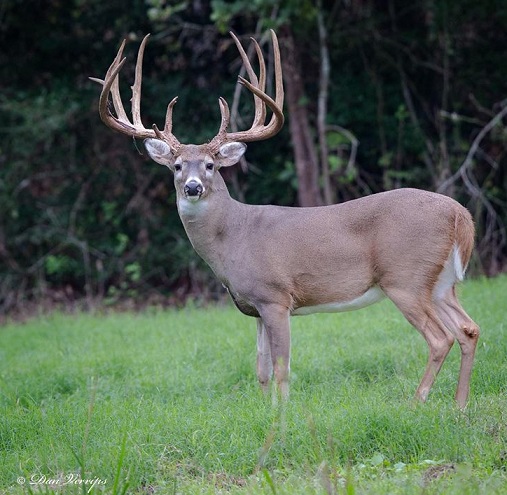
What do deer need?
I can safely say that the white-tailed deer can get along under some pretty harsh conditions, ranging from prolonged droughts in deep South Texas to even longer winters with temperatures reaching minus thirty. When protein is not available, they can recycle urea to provide their needs. When there is little or no water, they can survive without a drop for several weeks; taking advantage of metaboblic water and scant moisture from drought hardy plants.
Click here to read our article on what to plant for White-Tailed Deer in East Texas!
One of the largest antlered bucks I remember from my early days was one that had been kept in a Wisconsin chicken coop and fed light bread and lettuce! So, what is the big deal about supplementing their diet? There is a huge difference between surviving and thriving. Just getting along is not what we are after in a quality deer management program. The goal is to put deer into a position of need.
There are two stress periods for deer, one in late summer-early fall and another in late winter. Depending on where you are geographically, the degree of stress can vary from season to season and year to year. In the South, the greatest stress most often occurs in the late summer-early fall period, while for northern deer more often than not it is in late winter. No matter where you are managing deer, the goal is to level out the quantity and quality of foods over the entire year (see graph). Since each geographic area has unique challenges to this goal, there can be many solutions to the problem. The trick is to find and employ those that will be both cost and functionally effective. In other words, deer management is site specific, and it seldom is possible to develop a “cook book” approach to management.
Nutritional Requirements of White-tailed Deer
You hear and read a lot about protein; yet, every research project we have conducted on limiting factors of whitetails, protein availability comes in third! The number one limiting factor is digestible energy and the number two is phosphorus. Digestible energy refers to the amount of energy in the foods deer eat that can be digested. Yet, not all of this energy can be used by the deer. A sizeable portion is lost through the feces and urine, leaving behind what we call metabolizable energy (ME).
Deer need energy for a host of activities, among which are growing and replacing their hair, moving about and keeping warm, growing antlers, growing fetuses and producing milk to feed fawns. Cell division and metabolic activities take energy, often a significant amount.
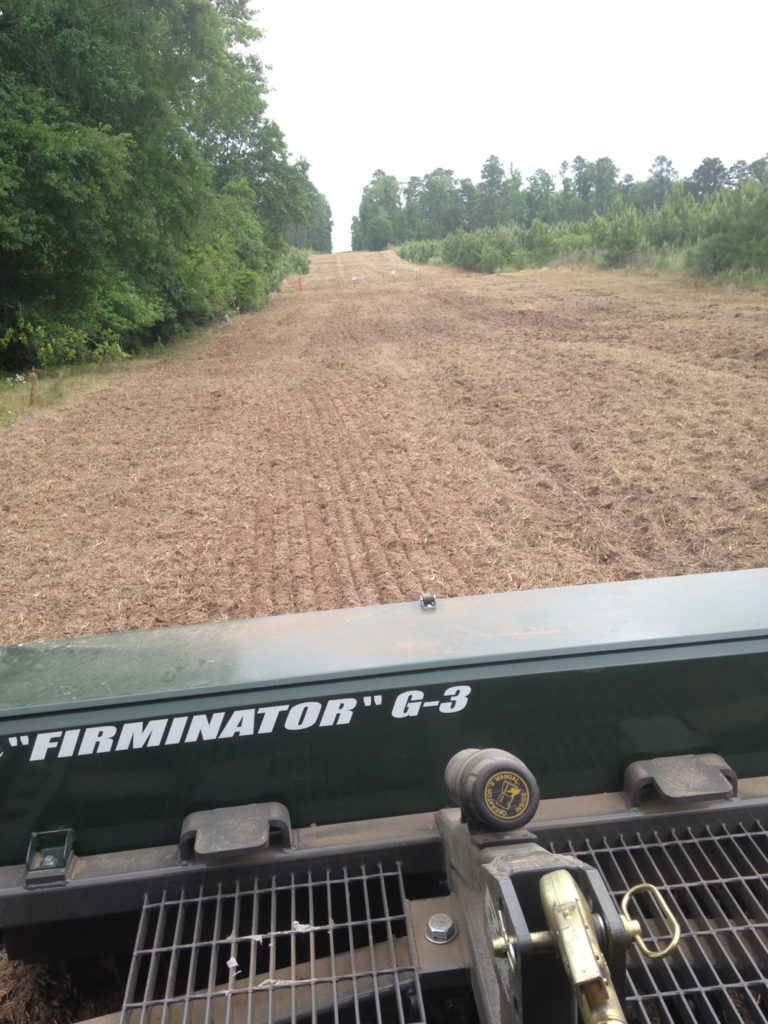
A buck growing a trophy set of antlers needs many times the energy you or I need for daily life. In fact, if we ingested the amount of calories consumed daily by a buck, we would have a serious weight problem! Highest energy demand is from April to July for both bucks and does.
If you want to learn more about what deer eat in Texas and what their protein requirements really are, check out our article What do Deer Eat.
Phosphorus in White-Tailed Deer Diets
Phosphorus (p) comes in many forms, but is extremely important for a host of needs, most significant of which is bone growth. About 80% of all phosphorus in a deer’s body is in its bones, and this includes antlers. The average mammal has about 22% of its body as phosphorus. This element also is critical to activities such as metabolism, blood buffering and reproduction. The availability of P is strongly influenced by soil pH, and on each side of the pH spectrum (acid to basic) P becomes less available. Plants rich in P like cereal grains are highly preferred by deer. Phosphorus has a partner in all this, calcium, which also is a critical element. The P:Ca ratio is critical and should be in the 1:2 range. As the ratio skews towards calcium, P availability declines.
Protein in Diets of White-Tailed Deer
There are many misconceptions about protein, especially among those who feed deer. The old adage, “If a little is good, a whole lot is better!” does not apply to deer nutrition. Deer can do perfectly well with protein levels around 17-18%. Only during the first year do they need higher levels. The older a buck becomes, the less protein he needs. That is why the Wisconsin buck discussed earlier was able to do well on meager rations.
Protein is in greatest demand when there is active body growth, which explains why deer do not need much protein in the colder parts of the year. Lastly, protein is a very broad term covering a host of compounds and sources. I and other scientists have seen deer eating birds, fish, carrion, eggs, and even the remains of other deer.
I studied whitetails on Stewart Island, New Zealand, discovering they often go down to the beach and eat whatever washes up on the shore. There are reports of whitetails eating alewives (herring family) along drainages feeding Lake Ontario.
In summary, deer need what they need, WHEN they need it. An effective supplemental feeding or forage program will satisfy the changing needs of deer over the year. Food plots are just one way to satisfy these needs. Any supplemental nutrition program should be developed to augment the natural, varying quality of native forages.
How to decide whether or not to plant food plots
I never have seen a plant variety that can grow either without water or when the temperature drops below freezing! Yet, the average person is still searching for one that does both. If you are considering developing a food plot program, or if you are frustrated by past failures, let me help.
The first question you need to ask yourself is, “Do I receive enough rainfall on average to grow a crop when my deer need it?” I can safely assert that if you do not receive at least 25 in. of rainfall, you should stop reading!
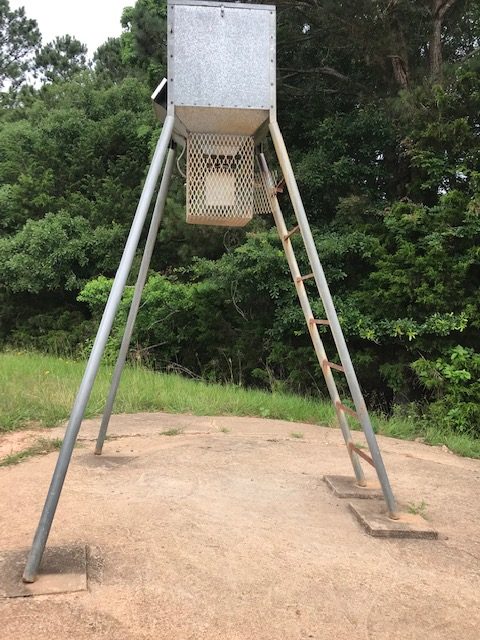
Your money would be far better spent feeding your deer, managing your native forage or both. If you are still with me, when does this rainfall occur? In South Texas, for example, rainfall is pretty much timed to the hurricane season, leaving the summer often too dry to grow forages. That limits the options you have for food plots.
In eastern Texas, however, not only is there generally more than enough rainfall, it occurs quite evenly; allowing you more options for food plots.
Summer v.s. Winter Food Plots for Deer
Since there are two stress periods for deer, there also are two types of food plots: cool season and warm season. Cool season means that crops are planted in the fall that are relatively cold hardy, growing over the winter months and maturing in the spring. Warm season crops, as the name implies, are planted in the Spring and grow throughout the Spring and Summer. Of course, there is much variation in year to year rainfall patterns, but this generality will work.
To learn more about food plots, check out our other article White-tail Food Plots, not another Food Plot article.
The easiest food plots to grow are those for the cool season. Yields are commonly higher and there are less weed competitors. Warm season plots are the most difficult to develop, even in areas with higher rainfall. Warm season plots produce less tonnage and are significantly more susceptible to weed competition, especially grasses.
Another question to ask is, “Do I have the equipment and adequate open land to plant food plots?” Food plot varieties generally do not grow well in the shade, so if you have few openings on your property, there are not many options for plots. You can take advantage of rights-of-way , roadsides and natural openings.
How much of your land should you plant in food plots for deer?
Our rule of thumb is you should plant at least 2% of your land to food plots to be effective. That translates to 2 acres per 100 acres of property. Cost of clearing land can run from $200-$800 per acre, although I have seen much higher costs. A well-planted and maintained food plot will cost $300 per acre per year, and that number is pretty solid!
How much do deer food plots actually produce?
Yields vary, but cool season plots can produce as much as 5 tons of digestible food each season, which translates to about 1,000 deer-days per acre. Warm season plots produce much less, around 2.5 tons, and can support 500 deer-days. More simply, in areas where both cool and warm season plots are possible, a one acre food plot will support from 3-5 deer.
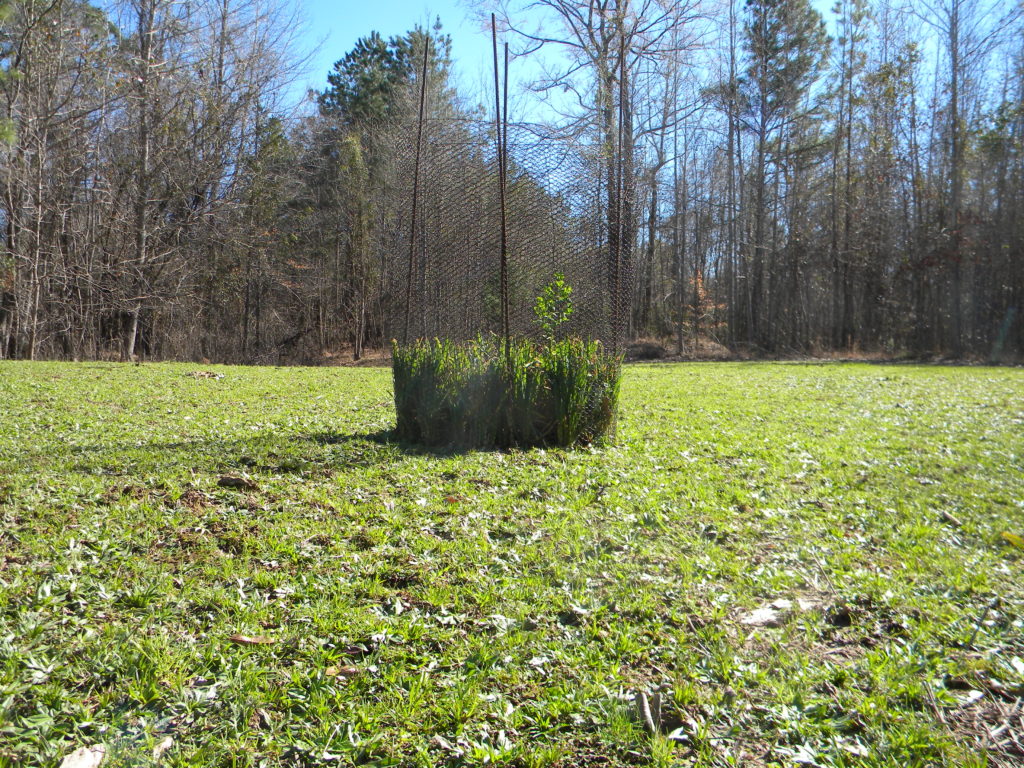
Our data suggest food plot forages cost about 3 cents per pound, and protein pellets about a quarter per pound. Bottom line, before you decide to plant food plots, you need to consider your annual rainfall and rain distribution, cost of planting and maintaining plots and what you will get back in return.
What type of food plot should I plant? (Hint- It’s cereal grains)
Since there are two distinct food plot seasons possible, there are few plants that will grow well under two conditions. As I noted earlier, history is littered with the carcasses of “magic beans” and high hopes! After four decades of research, I can say with all confidence the dairymen who advised me early on were exactly right.
If you’re in Central Texas and want to know what to plant, check out our article White-Tailed Deer Food Plots for Central Texas.
Cereal grains and legumes tend to win out over other plants we test. As to which of these, there is much debate. However, again I can confidently say that oats are the most highly preferred cereal grain; we have proved it time and again. We think it is because oats have significantly more water and alcohol soluble carbohydrate, and have higher digestibility.
Wheat comes in a distant second and generally is more cold hardy than oats; however, there are exceptions. Rye and triticale do well in sandy soils, but mature too early and are not highly preferred by deer. Rye grass is the worst thing you plant for deer, in my opinion. It grows well and just about anybody can plant it, but you will not be doing your deer a favor, unless they have nothing else to eat! Most cereal grains are higher in phosphorus than non-grains.
Using Winter Oats in Winter Food Plots for Deer
The exception I mentioned above is the cold hardy, winter oat. They were developed not only to be cold hardy, but to provide superior grazing. There are two types of oats, Winter and Spring. Winter oats were developed for the South (in spite of the name), since they can be grazed all Winter and into Spring. Spring oats are grown in the North and are our used for grain.
The physical difference between the two is that the Spring oat emerges from the seed trying to make a seed head as quickly as possible. The winter oat spreads out on the ground and produces many stems (tillers) to protect them from grazing.
Only when Spring temperatures exceed 70 degrees, with they begin making a seed head. It is almost impossible to over-graze a winter oat. Wheat also is primarily a grain crop, and if you plant wheat you automatically spot yourself a 40% loss in forage production.
Using Legumes in Food Plots for White-tailed Deer
Legumes come in many varieties, but the useful ones are the clovers, alfalfa, peas and beans. In regions with early Fall rainfall, followed by wet winters and springs, clover is the plant of choice. Yet, which variety to plant varies by region.
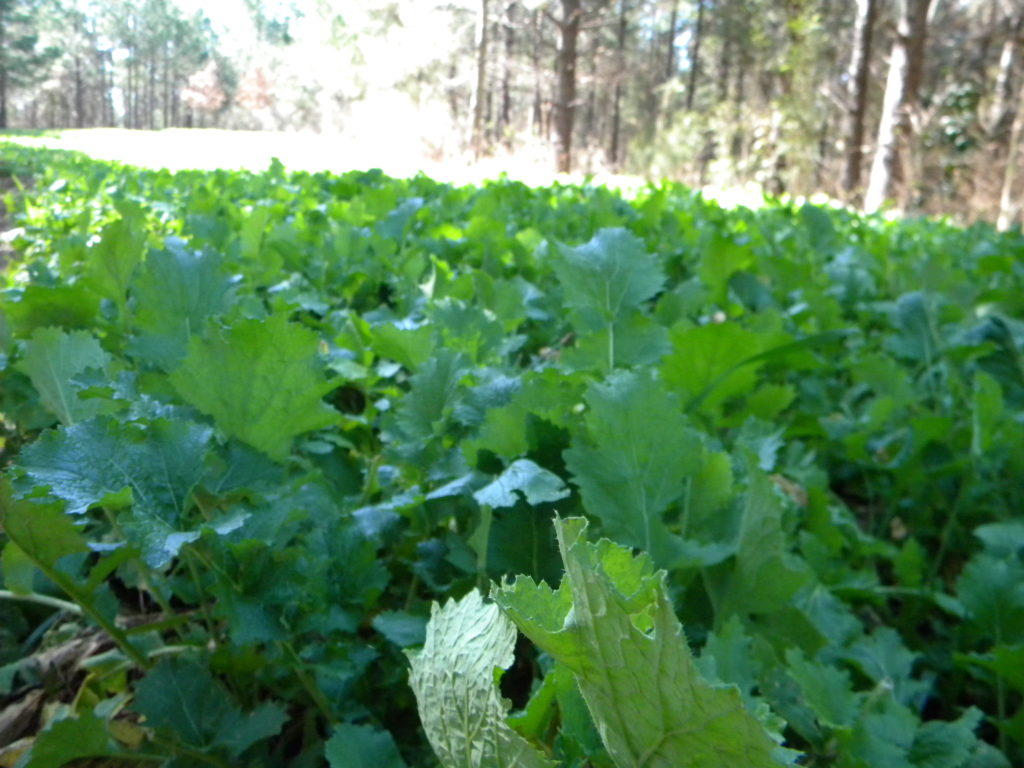
Generally we recommend either red or white clovers, depending on average temperature during the growing season. Red clovers tend to produce more yield, but also tend to be annuals; while, white clovers are perennials that do well where summers are mild.
All legumes are higher in calcium, making them excellent choices for combined plantings with cereal grains. Alfalfa is the plant of choice for deer, but it also is the most difficult to grow, requiring very strict soil and moisture conditions.
Using Peas and Beans in Food Plots for White-tailed Deer
What about peas and beans? Although there are cool season peas such as Austrian winter peas, they are so highly preferred by deer that they seldom are worth planting, unless you control access with an electric or net-wire fence. In southern climates with adequate rainfall, we have found cowpeas to be the best summer forage, again if they are protected until at a height to combat grazing pressure.
We pioneered the use of three wire electric fences to control access of deer. We have used these fences to not only regulate access, but also to develop rotation grazing systems, forage banking and even silage production for deer. We have successfully grown cowpeas in South Texas, but are still limited by drought. Soybeans were developed primarily for seed, and even have been bred to have physical features to combat deer predation. Yields are considerably lower for soybeans than cowpeas.
Using Lab-Lab in Food Plots for White-tailed Deer
What about Lab-lab? This is a plant useful in dry climates, but we must point out it takes a very good farmer to produce cost-effective crops. Our research, as well as published research, show that there is little difference in production between cowpeas and Lab-lab; but, there is a cost per pound difference, with Lab-lab loosing every time!
Other Options for Planting Food Plots
The only non-legume we ever have found to be useful is chicory, a plant related to dandelions and lettuce. If you ever have eaten “spring mix” in a salad, you probably have eaten chicory. It is a very drought-hardy plant (once established), a 5-7 year perennial, and is a preferred deer food. The major drawback is in establishment. Chicory does not geminate well unless the conditions are cool and wet; one seldom seen in at least half of Texas! We limit chicory to the eastern portion of the state.
I cannot end this discussion of plant varieties without taking on the Brassicas: turnips, rape, kale, cabbage, sugar beets, radishes, etc. These are the cheapest and easiest cool season crops to grow, so why do I not recommend them?
When I first discovered problems with Brassicas, and published my findings, you would have thought I questioned motherhood? I received a lot of nasty comments on blogs about my opinions; but, they were not just opinions. There is solid science to back them up. Turns out the Brassicas are loaded with toxic alkaloids, which if eaten too much, can produce hemolytic anemia, kidney and liver damage, reduced sperm production and even death in deer. Deer tend to eat more of them in the very cold months, probably since other plants are not as readily available. Under such conditions, Brassicas tend to concentrate the alkaloids, especially in the tubers. Studies in Europe have shown that over-consumption of Brassicas kills roe deer and red deer; and many countries limit the acreage that can be planted.
My best advice in selecting a food plot variety that will do well in your area is to consult a forage professional. As a warning, there are a lot of companies out there who are more than happy to sell you something that will not do well; and, some even have “experts” to promote their products.
Further, as one who frequently appears on at least three TV networks, I would be suspicious of any “celebrity” who touts a food plot variety. I can tell you with confidence to NEVER purchase see blends or mixes. They seldom have enough seed to meet the recommended planting rate. Also, since each variety requires a specific planting depth, how are you going to plant a mix that has seed requiring from 1/8 to 2 inches planting depth? Always purchase pure seed of a single variety.
Hopefully, I have given you some ways to make sound decisions about food plots on your land. A little bit of planning and serious consideration of your land, your climate and your capabilities will save you a great deal of frustration and money. For more information, you can visit my website, drdeer.com. We have compiled four decades of experience on the website for your use. Good luck!
